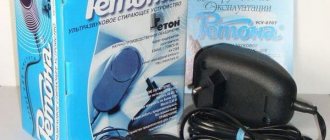Why are vacuum bags needed?
With traditional storage, space is taken up not only by clothes, but also by air, so even neatly folded items require a lot of free space. This is especially true for down jackets, overalls, and blankets.
This is a very common way to store things. Packages are popular with everyone because they have many advantages.
A vacuum cover is needed to ensure that bulky objects take up as little space as possible; for this purpose, the air is sucked out of it with a vacuum cleaner. This reduces the volume by 2-4 times.
The volume of packed items is significantly reduced (by almost 60-70%), which allows you to stack several packages in one place.
It is convenient to use bags for an off-season wardrobe, when traveling, and also when moving. All kinds of blankets, textiles, soft toys will become as compact as possible.
Great for packing items of different shapes (winter and summer clothes, blankets, toys, bed linen).
Important! When vacuum storing clothes, the contents of the bag are protected from dampness, dust, and insects. An additional plus: transparent polyethylene allows you to quickly find the right thing.
Useful tips. | Topic author: Kathleen
How to properly store clothes.
Center (Angyalka) Their durability and appearance largely depend on the correct storage of things. It’s not enough to just wash and hide the outfit in the closet; you need to hang it up, sort it and pack it properly. Let us understand the intricacies of storing things and organizing our wardrobe.
Center (Angyalka) stage 2
Center (Angyalka) Now let's take a closer look at storing things made from certain types of fabric.
Oksana (Aashil) thanks for the advice, I really liked it.
Center (Angyalka) Storage of knitted products.
Center (Angyalka) Remedies for moths and unpleasant odors.
Center (Angyalka) General recommendations for storing items:
Center (Angyalka) Wardrobe organization: how to properly put things away for storage.
The clothes you appear in from time to time.
Clothes that you wear very rarely on certain occasions.
Center (Angyalka) Vacuum storage of things.
Center (Angyalka) What you need to know about vacuum bags.
Center (Angyalka) Tips for using and storing vacuum bags.
Center (Angyalka) How to use vacuum bags correctly.
Center (Angyalka) The optimal choice of vacuum cleaner for vacuum storage.
Center (Angyalka) How to store water.
Center (Angyalka) Structured water.
Center (Angyalka) Benefits and harms.
Center (Angyalka) How to make structured water at home.
Center (Angyalka) Is it possible to buy structured water?
Center (Angyalka) How to properly store shoes.
Types of vacuum bags
Products differ in functional features and size, so you should choose them taking into account your needs:
- With a valve, they are convenient for long-term storage, as they remove air as much as possible. They are the most common and come in various sizes.
They perfectly store clothes made from different materials (fur, artificial textiles, suede).
- Once filled with laundry, the package without a valve is closed with a zipper, leaving a small hole for air to escape. After this, roll it from the bottom up into a tight roll, pushing out the air with your hands, and fasten the lock. This type is less effective and is suitable if you don’t have a vacuum cleaner at hand. They come in small and medium sizes.
The material of the bags is durable and the packaging is airtight.
- Hanging models do not withstand heavy loads; they are used for clothes that are undesirable to be folded, for example, coats and jackets.
Things are reliably protected from moths, dust, unpleasant odors, and high humidity. Mold does not appear on them.
- Bedding and knitwear are stored with scenting. You can get a light aroma yourself by placing a perfumed sachet inside any airless packaging.
A wide range of prices allows people of any income to purchase vacuum bags for clothes.
All bags are made of durable polyethylene, but the larger the area, the stronger the material should be. Small defects can be sealed with tape, but the seal will remain sealed. The most fragile part of the device is the valve, so impacts on a hard surface are not advisable.
Thanks to their compact size, the bags are easy to transport (a lot of vacuum-sealed items can fit into a suitcase or car trunk).
When choosing the dimensions of the case, consider where it will be stored in the future:
- 50*60, 50*40 cm fits in a standard closet, ideal for travel, it is convenient to use for light items, children's underwear.
You can store things for a long time.
- 80*60, 90*55 cm and other bags less than a meter in length can be placed on the mezzanine. Since it is often difficult to get clothes out of there, it is better to store at the top what is not in demand or is a pity to throw away.
When choosing a bag, pay attention to several points: the quality of polyethylene and fastener, the reliability of the valve, the size of the bag.
- from 100*80 to 130*90 cm are suitable for storing pillows, blankets, and off-season wardrobes. Depending on the size, they are stored in bed and sofa niches.
The main disadvantage of bags is the need for a vacuum cleaner, so they are not suitable for travel.
- 90*70, 125*70 cm with hangers and hangers are used for hanging outerwear. When choosing this model, consider the depth of the wardrobe.
Do not put many items in one large package.
Important! Before purchasing a vacuum cover, measure the parameters of the cabinet or niche where it will be stored.
How to use storage bags correctly
There are a variety of vacuum bags for storing things, how to use them to get maximum benefit:
Everything that is planned to be “canned” must be washed and dried thoroughly. Otherwise, the smell of dampness will spread to all the laundry.
Since almost all the air is pumped out, the bags are significantly reduced in size and it is easy to pack several things.
Sort accessories by season and frequency of use. It is not recommended to store winter down jackets together, which will be unclaimed until next winter, with pillows and blankets, if they can be useful once every month or two, depending on the frequency of guests.
Manufacturers offer a large selection of products in different sizes.
Note! Infrequent use will save you from constant re-folding and extend the life of the product.
Linen with rivets or sharp fittings must be packed so that all sharp elements are hidden inside. Usually it is enough to turn things inside out or put them between layers.
It is important to choose the right bag size for your clothes.
The cover must be of the correct size and filled evenly by two-thirds with an allowance of up to 10 cm around the lock.
Experienced travelers recommend choosing a package based on the size of the suitcase.
After filling, the lock is fastened using a clamp, moving it back and forth several times. The clasp consists of two stripes for greater reliability.
Place items in a vacuum bag strictly dry and clean.
To seal, open the valve cover and pump out the air with a vacuum cleaner. For this purpose, you can also purchase a special vacuum pump; it is convenient for travel.
Do not fold the products haphazardly, but roll them up or simply roll them carefully.
Then tighten the valve and check the tightness: the layer should remain solid and not take in air. A whistle is a sign that there is a hole or the zipper is poorly closed.
Some bags have a special mark up to which items can be folded.
Additional Information. The degree of air pumping is chosen at your discretion. Most often, it is removed completely, and the package stops shrinking. It is not recommended to compress clothes with natural down as much as possible, so as not to damage the filling.
What materials should not be stored in vacuum bags?
Some of the materials that should not be stored in vacuum bags—either for long periods of time or at all—include:
- Natural fibers such as wool and fur.
- Fluffy items such as sleeping bags, large coats and down jackets.
- Leather jackets or other leather goods.
Natural fibers
As mentioned earlier, items made from natural fibers (wool and fur) should not be stored in vacuum bags for long periods of time. After all, in order for the fibers to maintain their natural shape, they need air.
Storing wool and fur items in vacuum bags for several months is not so bad. But when storage exceeds six months, the product may become damaged.
If you plan to leave natural fiber items in vacuum bags for a long time, you should air them out from time to time. Also, remember that wool items can retain moisture and, therefore, can damage other items in your wardrobe.
Volumetric things
Bulky items such as down jackets, coats, insulated jackets and sleeping bags that contain a lot of air should never be vacuum sealed. When you remove the air from these things, they become deformed and remain that way for a long time. There is no way to return them to their original appearance again.
Sleeping bags and oversized coats are so great because they have air inside them. When they are evacuated, they lose their ability to retain heat.
What was once a well-insulated blanket can turn into a thin blanket.
Leather Products
Leather products also cannot be stored in vacuum bags. When storing leather clothing using a vacuum, strong pressure is exerted on the material. The skin will become wrinkled and wrinkled, and this will lead to a loss of attractive appearance.
When you use vacuum bags to store suitable materials (cotton, spandex, polyester, etc.) for a short time, your clothes should not get damaged.
Consider using vacuum sealed bags for seasonal storage, or if you want to store items longer, air them out every six months.
How to open a bag of clothes correctly
When used carefully, vacuum bags are suitable for repeated use.
They should be opened in reverse order:
- First, unscrew the valve cap and wait for air to flow.
- Open the zip-lock by longitudinally shifting its strips relative to each other. When stretching the fastener to the sides, there is a risk of damaging it and the integrity of the polyethylene.
- Take things out, hang them up or steam them with an iron. Outerwear should be unpacked a couple of weeks before wearing so that it regains its original shape.
When closing the bag with a zipper, make sure there are no gaps. Move the zipper along the zipper with a little force.
Additional Information. Every 6 months, the plastic cover should be unsealed and the contents ventilated.
Analogs of vacuum bags
There is nothing more convenient than using ready-made vacuum bags for clothes, but if you don’t have them, you can make them yourself. You will need a thick bag, a vacuum cleaner and tape. In order to achieve a vacuum, you need to fold things tightly, tighten the bag, leaving the neck open. Remove air through the remaining hole with a vacuum cleaner and tighten tightly with tape. Such a homemade disposable device may gain air over time if there are unnoticeable holes.
Things in a vacuum bag wrinkle, but not so much that you have to worry about deformation.
The practicality of vacuum storage is appreciated by many housewives: it saves space, keeps laundry clean and is suitable for reusable use. When choosing a size, give preference to several small bags rather than one large one. In this case, things will be laid out taking into account the density of the fabric and the frequency of wear.
The bag protects the fabrics from dust, dirt, insects and other troubles.
Before putting away collected laundry, it is recommended to wait a few hours and make sure the packaging is sealed.
Store filled bags away from hot objects and sunlight - cupboards are fine.
How to properly “preserve” things
To ensure that textiles and other household items packed in compression bags are stored for a long time, you need to follow a few simple recommendations:
- Jackets, skirts, T-shirts, trousers and other clothing must first be washed and dried.
- Metal elements of items can compromise the integrity of the packaging. It is necessary to ensure that buttons, rivets, zippers and other accessories do not come into contact with the bag material. Immediately before packing, items are turned inside out.
- Before you begin to remove air from the bag, you should check whether there is enough space in it to freely zip the package.
- Compression bags should not be overloaded beyond the norm specified for a specific product.
- Clothing and household items should be distributed as evenly as possible, so the packaging will take up less space and things will not wrinkle too much.
- The zip fastener must be closed with the supplied clothespin, or with your fingers along its entire length.
- When pumping out air with a vacuum cleaner, you should not allow the device to overheat (usually thirty seconds is enough to achieve the required goal). High temperatures can damage the material the bag is made from.
- After completely pumping out the air, immediately close the valve opening tightly.
- You should not be zealous and remove too much air when it comes to “sealing” down jackets or feather pillows. A vacuum can damage them.
- Ideally, packaged textiles should be kept strictly vertically, this reduces the risk of depressurization due to damage to the film.
- Do not store bags near heating devices.
- Vacuum packed items should be kept out of the reach of children.











